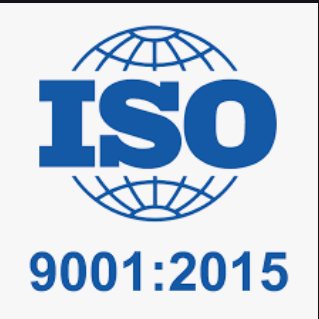الاصلاح الاقتصادي اداةً لتنويع الاقتصاد العراقي
Authors:
- Mustafa Fazil Hamadi
- ORCID:
Economic reform , Iraqi economy
Abstract:
Many countries have followed economic reform policies as a result of the debt problem in 1982. Many countries have shifted from a planned economy towards a free economy by following economic reform programs with the help of the International Monetary Fund and the World Bank. Iraq introduced some aspects of economic reform in the nineties of the last century. But without the intervention of any of the two international institutions, and these reforms were very simple, but the political change in (2003) and the rise in foreign debts on Iraq as a result of wars and economic siege led Iraq to follow economic reform programs with the help of the two international organizations in (2004), now and after ( 18) years to follow these policies, Iraq still did not achieve the desired goals of these reforms, especially with regard to economic diversification, so the study’s goal came to show the reasons that led to the failure of economic reforms to achieve their goals with regard to diversifying the Iraqi economy and what are the measures that must be taken to solve this is the problem. The study assumed that the main reason for not achieving economic diversification is the incorrect application of economic reform policies and the failure to benefit from its returns in improving the structure of the economy. The study used the analytical method by analyzing the data of the oil and non-oil economic sectors and the extent of their contribution to the gross domestic product (GDP), public revenues and exports. The study reached conclusions, the most important of which is that one of the reasons for the lack of economic diversification is the weakness of internal security and the lack of attention to infrastructure, especially in the agricultural sector, which led to high production costs and thus the exit of many producers from the production cycle and their search for government jobs with high returns for them if compared to the returns of their products of high cost. As for the most important proposals, they are concerned with providing internal security in Iraq by providing opportunities for workers in the private sector by encouraging the private sector to produce by creating a spirit of competition between private sector companies by licensing the public sector to carry out privatization processes and leaving the private sector to produce with higher efficiency. These measures are enough to achieve economic diversification and work to reduce prices and improve production technology.
References:
- 1-البنك الدولي،2020، النهوض من واقع الهشاشة، مذكرة اقتصادية حول التنويع والنمو في العراق.
2- البنك المركزي العراقي، 2020، التقرير الاقتصادي السنوي، دائرة الاحصاء والابحاث، جمهورية العراق.
3- البنك المركزي العراقي، 2019، التقرير الاقتصادي السنوي، دائرة الاحصاء والابحاث، جمهورية العراق.
4- البنك المركزي العراقي، 2018، التقرير الاقتصادي السنوي، دائرة الاحصاء والابحاث، جمهورية العراق.
5- البنك المركزي العراقي، 2017، التقرير الاقتصادي السنوي، دائرة الاحصاء والابحاث، جمهورية العراق.
6- البنك المركزي العراقي، 2016، التقرير الاقتصادي السنوي، دائرة الاحصاء والابحاث، جمهورية العراق.
7- البنك المركزي العراقي، 2015، التقرير الاقتصادي السنوي، دائرة الاحصاء والابحاث، جمهورية العراق.
8- البنك المركزي العراقي، 2014، التقرير الاقتصادي السنوي، دائرة الاحصاء والابحاث، جمهورية العراق.
9- بهنام، سمير حنا، 2021، دور سياسات الاصلاح الاقتصادي في استقطاب الاستثمار الاجنبي المباشر في الاقتصاد العراقي للمدة (1990-2020)، مجلة تكريت للعلوم الادارية والاقتصادية، المجلد (17)، العدد (54).
10- التكريتي، هيفاء عبد الرحمن ياسين، 2017، اثر سياسات الاصلاح الاقتصادي والخصخصة على البطالة في الدول العربية، مجلة تكريت للعلوم الادارية والاقتصادية، المجلد (2) ، العدد (38).
11- الجابري والزبيدي، قصي وغيداء جعفر، 2013، اثر الاصلاحات الهيكلية في عجز الحساب الجاري في الاردن للمدة 1990-2010، مجلة الادارة والاقتصاد، السنة (36)، العدد (77).
12- شعيب ودلي، سندس جاسم وشذى سالم، 2017، دور سياسات الاصلاح الاقتصادي في جذب الاستثمار الاجنبي المباشر العراق حالة دراسية، مجلة المثنى للعلوم الادارية والاقتصادية، المجلد (7)، العدد (3) .
13- شندي، اديب قاسم، 2019، اصلاح الموازنة العامة جزءاً من الاصلاح الاقتصادي (موازنة 2019) حالة دراسية، مجلة جامعة الانبار للعلوم الاقتصادية والادارية، المجلد (11)، العدد (27).
14- صندوق النقد الدولي، 2013، العراق- تقرير الخبراء حول مشاورات المادة الرابعة لعام 2013، القضايا الرئيسية.
15- عبد الله وضرار، حاتم علي وسامر محمد فخري، 2018، الاقتصاد المعرفي رؤية استراتيجية مقترحة للاصلاح الاقتصادي الشامل في العراق، مجلة الكتاب للعلوم الانسانية، المجلد (1)، العدد (1).
16- عبد العالي، امجد صباح، 2011، الاثار المتوقعة لسياسات الاصلاح الاقتصادي على البطالة والفقر في العراق، مجلة الاقتصادي الخليجي، العدد (20).
17- علي واخرون، سعد حسن، 2020، تقييم برامج الاصلاح الاقتصادي في العراق بعد التعديل للفترة من عام (2003-2016)، مجلة كلية بغداد للعلوم الاقتصادية الجامعة، العدد (61) .
18- عمران، ستار جابر، 2019، منهجية الاصلاح الاقتصادي في العراق- دراسة تحليلية، مجلة الادارة والاقتصاد، السنة (42)، العدد (120).
19- غيدان وحطيمان، جليل كامل وهيثم حسون، 2016، التكاليف الاجتماعية لبرامج الاصلاح الاقتصادي في العراق بعد 2003، مجلة الكوت للعلوم الاقتصادية والادارية، كلية الادارة والاقتصاد، جامعة واسط، العدد (21).
20- النجفي، سالم توفيق، 2002، سياسات التثبيت الاقتصادي والتكييف الهيكلي واثرها في التكامل الاقتصادي العربي، بيت الحكمة، العراق، بغداد.
21- نجم وغيدان، حيدر ربح وجليل كامل، 2020، الاصلاح الاقتصادي في الجزائر (الواقع والطموحات)، مجلة الكوت للعلوم الاقتصادية والادارية، العدد (12).

